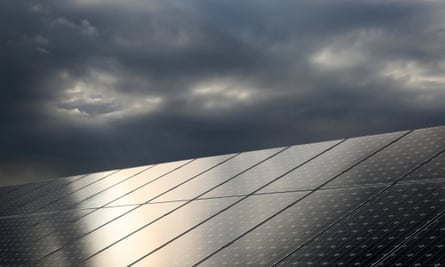It’s happened. The long summer holidays are over and a new school year has begun – and not just for pupils and teachers. School governors and business managers around the country are meeting to review budgets, and a sizeable chunk of the annual spend will be going on electricity bills.
Households, businesses and the public sector have long felt the pinch thanks to the “big six” energy firms. Even with a government hell-bent on fracking, our bills are unlikely to fall. But it doesn’t have to be this way.
By investing in solar power on their large estates, schools can save money: 50kW solar panels will make around £8,000 per year through payments from energy suppliers, exporting power to the grid and savings on in-house electricity bills. Multiply this by the 30,000 schools across the UK and we’re looking at a total annual income of £240m. Just think what schools could do with that extra cash: libraries, playgrounds, field trips – or the salaries of more than 6,000 teachers.
As well as generating enough clean electricity to power 380,000 homes, every year schools could save the same volume of carbon emissions as taking 110,000 cars off the road. When it comes to tackling climate change, these kinds of benefits should not be sniffed at.
In Germany, around 40% of renewable energy is owned by individuals and communities. In the UK it is a fraction of our clean energy operations. But schools could help make community renewables a familiar sight and an attractive proposition.
Schools are already the beating hearts of our local communities. Now they can also be mini solar-power stations, providing opportunities for school children to learn how energy works and helping to make decentralised, renewable energy an everyday experience for us all. So what’s stopping them?
Governors tell us it’s the high startup costs that put them off. Though the technology is getting cheaper, it still costs up to £1,500 per kW installed. That is money that most schools just do not have. But there are ways around this. An environmental charity, 10:10, for example, helps schools to crowdfund the cash needed; Gen Community invites people to buy shares in a solar scheme; and Evogreen rents out PV installations.
Friends of the Earth is most interested in funding models in which the school retains as much additional income as possible and this is where councils come in. Last year, Bradford council loaned Saltaire primary school in Shipley enough money to install solar. It will take the school seven to eight years to pay that loan back, but after that point it keeps all the additional income from the energy source. Over the next 25 years it should make at least £80,000 – almost three times the cost of the panels.

This summer Bradford passed a motion to award low-interest loans to up to 40 other local schools. We are hearing of other areas following suit.
Research by Friends of the Earth suggests that in Blackpool, a town on the frontline against fracking, schools last year spent £850,000 on their electricity bills alone. That is a colossal sum to be handing over to the big energy firms. If Blackpool council helped all 39 schools in their area to install solar power, they could be earning more than £300,000 a year.
Similarly 117 schools in Barnet, London, collectively spent a whopping £2.3m on their electricity bills last year, which could be slashed by £950,000 using solar. Even if councils choose a funding model in which they keep the feed-in tariff payments for themselves (understandable in the current financial climate for local government), the schools would still gain. This would surely be good news for Barnet, so badly hit by government cuts to its budgets that it produced its “graph of doom” predicting bankruptcy. It could pump that money back into the local community – into police, hospitals, social services – providing better value for its taxpayers.
If we are going to encourage schools to take this step, central government needs to make it easier. It is up to the new education secretary, Nicky Morgan, to follow up on Greg Barker’s warm words with action, by allowing every school to borrow to install solar panels.
In fact every public building should have solar panels, and we need an easier application process for community groups to plug into clean energy.
Marie Reynolds is communications lead for Friends of the Earth’s Run on Sun campaign. To nominate a school to enter Friends of the Earth’s competition to win solar panels, visit foe.co.uk/go/nominateschool.
More stories like this:
Government energy policy too focused on redundant utility business models
How I launched a renewable energy start up
Community energy schemes: what’s holding local people back?
This article is part of the Guardian’s #bigenergydebate series. Click here to find out more about this project and our partners.

Comments (…)
Sign in or create your Guardian account to join the discussion